With experts across the WILDLABS community working with every type of technology and in every imaginable environment, our platform is a great place to find advice and resources on choosing what tools are right for your conservation project. Whether you're in the market to try a new camera trap model, want to experiment with drones for the first time, or need help weighing the pros and cons of data management tools, there's someone in the WILDLABS community who can help you make a smart and informed choice!
The Community Base is our general gathering group. It's the place where we cover more general, big picture topics in conservation technology - ones that don't fit neatly into our other groups. If you don't know where to post something, just post it in this group. Our moderators will move it if needed!
At our Community Base, you'll find updates from the WILDLABS team on upcoming events and opportunities, and have the chance to shape our programs and platform with your opinions. And most importantly, the Community Base is also home to our Welcome to WILDLABS thread, the best place to introduce yourself to us and the community. Stop by and tell us what you're working on!
Whether you're new to WILDLABS and want to know where to begin, or you're a longtime member looking for a handy bank of resources, our Getting Started on WILDLABS thread will be your one-stop guide to getting the most out of our platform.
Want to find out more about WILDLABS? Check out our recent community call:
Header image: Ana Verahrami/Elephant Listening Project
Group curators
- @StephODonnell
- | She / Her
WILDLABS
I'm the Community Manager at WILDLABS



- 149 Resources
- 651 Discussions
- 30 Groups
- @TaliaSpeaker
- | She/her
WILDLABS & World Wide Fund for Nature/ World Wildlife Fund (WWF)
I'm the WILDLABS Research Specialist at WWF-US

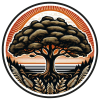

- 12 Resources
- 54 Discussions
- 24 Groups
- @EllieW
- | She/Her



- 64 Resources
- 124 Discussions
- 14 Groups

- 0 Resources
- 7 Discussions
- 2 Groups
Sensing Clues Foundation



- 0 Resources
- 44 Discussions
- 9 Groups
Programme Manager, Bahari Hai Conservation
- 0 Resources
- 1 Discussions
- 3 Groups
- 0 Resources
- 0 Discussions
- 11 Groups
- 0 Resources
- 0 Discussions
- 7 Groups
- @annie2
- | she/her
- 0 Resources
- 0 Discussions
- 16 Groups
Environmental Scientist, Directing and Producing for Science and Natural History
- 0 Resources
- 2 Discussions
- 2 Groups
Software Engineer
- 0 Resources
- 1 Discussions
- 4 Groups
Statistical Physics PhD Student

- 0 Resources
- 8 Discussions
- 2 Groups
- 2 Resources
- 10 Discussions
- 10 Groups
Max Planck Institute of Animal Behavior (MPI-AB), Technical University of Munich (TUM)
Behavioral Ecologist
- 0 Resources
- 1 Discussions
- 14 Groups
Wildlife Logistics
Ecologist / Business Management
- 0 Resources
- 0 Discussions
- 11 Groups
Tap into our new and exciting community-focused conversation series! In this first season of InConversation, we're in East Africa with host Esther Githinji. Listen in as we chat one-on-one with your favourite...
16 April 2024
We’ve received lots of interest in opening new groups on WILDLABS, so we’re rolling out a formalized process to get them off the ground.
15 April 2024
Careers
The Fonseca Leadership Program is open to nationals of eligible countries within WWF-US and GEF priority areas who are already enrolled/are interested in enrolling in a master’s or PhD program. Eligible countries...
3 April 2024
What can soundscapes tell us about ecosystem functioning and health? We are looking to hire a postdoctoral researcher in ecoacoustics for Nature Recovery at Oxford
2 April 2024
A grant of $150,000 will be awarded to one successful applicant with a proposal that's strongly linked to biodiversity and conservation. The grant will support a research project or programme for up to three years (...
2 April 2024
18 month postdoc research position, Netherlands, EU-funded
28 March 2024
After a long application review and finalisation process, we are thrilled to finally announce the winners of the WILDLABS Awards 2024!
26 March 2024
Article
You’re invited to the WILDLABS Variety Hour, a monthly event that connects you to conservation tech's most exciting projects, research, and ideas. We can't wait to bring you a whole new season of speakers and...
22 March 2024
As we launch the search for our third Women in Conservation Technology cohort, let’s take a moment to reflect on the highlights of our 2023 journey and shine a spotlight on the incredible women of our inaugural...
22 March 2024
SMART Global Congress, the first global gathering of conservation professionals using SMART, was held in Windhoek, Namibia from March 10-13. Here is a snapshot of what we learned!
19 March 2024
The Smithsonian’s National Zoo and Conservation Biology Institute (SNZCBI) is seeking two postdoctoral fellows to engage more directly with identifying conservation metrics for vertebrate communities and populations.
14 March 2024
The Max Planck Institute of Animal Behavior at its sites in Constance and Radolfzell offers an international, interdisciplinary, and collaborative environment that opens up unique research opportunities. The goal of our...
13 March 2024
April 2024
event
May 2024
event
June 2024
event
October 2024
April 2023
event
event
March 2023
event
event
| Description | Activity | Replies | Groups | Updated |
|---|---|---|---|---|
| Hello everyone!I'm thrilled to join this dynamic community of innovators and explorers. My name is Latifa, and I bring passion for adventure, a love for nature and a deep... |
+218
|
Community Base | 6 hours 2 minutes ago | |
| I would be interested in projects where the use of technology has gone wrong ( in whatever sense one can think of ), where the ( sometimes big ) promises of new tech simply... |
+7
|
Community Base | 20 hours 35 minutes ago | |
| That is an interesting concept, and it would be great if something out there worked. In the meantime, I will try not to drive at dusk 🦘At one point, I knew the "sonic" animal... |
|
Acoustics, Citizen Science, Community Base, Human-Wildlife Conflict | 1 week 1 day ago | |
| Thank you so much for this! |
|
Climate Change, Community Base, East Africa Community, Conservation Tech Training and Education | 1 week 3 days ago | |
| Awesome, thanks for the summary! |
+8
|
Protected Area Management Tools, Community Base | 3 weeks 4 days ago | |
| @Rob_Appleby follow these instructions to get your Sprout badge! |
|
Community Base | 1 month ago | |
| Hi Kevin and Kim, Apologies for the delayed response; however, we were unable to provide specific information until today. We aim to reach out to each applicant in the... |
+38
|
Community Base | 1 month 2 weeks ago | |
| Thanks @alexrood for creating this visual! |
|
Community Base | 1 month 2 weeks ago | |
| Hi Danilo. you seem very passionate about this initiative which is a good start.It is an interesting coincidence that I am starting another project for the coral reefs in the... |
|
Acoustics, AI for Conservation, Biologging, Camera Traps, Citizen Science, Climate Change, Community Base, Connectivity, Drones, Emerging Tech, Human-Wildlife Conflict, Open Source Solutions, Sensors, Software and Mobile Apps, Wildlife Crime | 2 months 2 weeks ago | |
| Real nice video. I'll have another look in the weekend in detail. |
+10
|
Acoustics, Community Base, Protected Area Management Tools, Remote Sensing & GIS, Sensors | 2 months 3 weeks ago | |
| Hi!I would take a look at Although developed for camera trap imagery, it is by no means restricted to such.Cheers,Lars |
|
Camera Traps, Community Base, Data management and processing tools, Drones, Emerging Tech, Remote Sensing & GIS, Software and Mobile Apps | 2 months 3 weeks ago | |
| Fire detection is a sort of broad idea. Usually people detect the products of fire, and most often this is smoke.Many home fire detectors in the US use a radioactive source... |
|
Community Base, Conservation Tech Training and Education, Data management and processing tools, Ethics of Conservation Tech, Human-Wildlife Conflict, Open Source Solutions, Protected Area Management Tools, Sensors, Wildlife Crime | 2 months 3 weeks ago |
Good Tech Fest | deep ticket discounts
5 April 2021 6:52pm
Funding opportunities on Experiment
9 March 2021 9:11pm
Join the sixth annual #Tech4Wildlife Photo Challenge!
24 February 2021 9:03pm
Interview opportunity about your experience in researching
18 February 2021 6:46pm
26 February 2021 4:23pm
@StephODonnell perhaps tweeting this out from the Wildlabs account to increase coverage?
Froilán and Edgardo - what do you mean by 'experienced'? That can mean different things to different people so just wanted to clarify the term. Thanks!
Seeking part-time (33%) lecturer candidates at UC Berkeley
24 February 2021 10:38pm
Documentary Series : scientific and technologic innovations to protect endangered animal species around the world
3 February 2021 5:11pm
Recruiting interview participants re. conservation+communities+tech
13 January 2021 7:06am
17 January 2021 1:12am
Someone also just sent me this super relevant FAO report on ICT's / phones / technology use in small scale fisheries: http://www.fao.org/documents/card/en/c/cb2030en
19 January 2021 8:57pm
Hi again! We just tweeted it out: https://twitter.com/uwchange/status/1351582312677347328
We're recruiting interview participants to study how environmental institutions use technology in interactions with their local communities. Please pass this on if you know someone who might like to participate!
— Change (@uwchange) January 19, 2021
More info: https://t.co/D9vLTQk2zi
19 January 2021 9:02pm
Awesome! I'll spread the word!
What have you been working on recently (2020)?
6 November 2020 4:46pm
18 January 2021 9:09am
Hi Ryan,
I can´t wait to see your cameratrap - drone setup work!
So much potential! Please keep us updated.
Greetings from Austria,
Robin
18 January 2021 3:09pm
Hi Robin!
Lots of updates coming soon. Hoping to do a test flight on one of the drones today if the rain holds off and I'll be sure to post some photos.
19 January 2021 8:58am
Hi Ryan,
this sounds great!
Tech Tutors: How do I build a community-owned conservation tech research project?
6 January 2021 4:57pm
Enter the Global Innovation Award competition!
17 December 2020 10:51pm
Weekly #Tech4Wildlife highlights from Twitter
7 October 2020 8:27pm
20 November 2020 11:13pm
Hi Wildlabbers,
It's already time for more weekly tweet highlights!
First, we were excited to see Season 1 Tech Tutor's Sara Beery getting tweeted about the MegaDetector in action!
Yay #MegaDetector!! Vertically aligned animals was one of the things we targeted with the v4 release, great to see that it helped https://t.co/4kW9blGQZ8
— Sara Beery (@sarameghanbeery) November 19, 2020
Next, we loved seeing another Season 1 Tech Tutor, Daniel Situnayake repping his episode in this tweet about some very fun backyard birdwatching AI!
The @BirdBuddy_ is a super cute AI bird feeder that recognizes birds by their image or their song. It would be even cooler if inference happened on-device!
— Daniel Situnayake #BlackLivesMatter (@dansitu) November 19, 2020
p.s. to train your own birdsong recognizer, see my @WILDLABSNET tutorial:https://t.co/3gl2MJNm1Nhttps://t.co/oTaC3BxOZe
Community member Shah Selbe shared an article about this unique sensor deployment strategy involving drones and darts - what do you guys think of using this system in the field??
Sensor-equipped darts shot from drones is definitely not a conservation technology deployment approach I’ve thought of before. https://t.co/i4C4h7oLxD
— Shah Selbe (@shahselbe) November 17, 2020
And lastly, we can't NOT mention that we celebrated WILDLABS' fifth anniversary this week!
Tweet us or post with your favorite community memories from the past five years!Happy anniversary to WILDLABS! For five years, we've seen incredible collaborations and successes come out of this community, and we can't wait to see what we can build and accomplish together in #tech4wildlife in the next five years! We're just getting started.
— WILDLABS Community (@WILDLABSNET) November 18, 2020
-Ellie
4 December 2020 1:40pm
I thought this one was seriously cool this week:
My MarkII directional #bioacoustics recorder works! Here’s a #bat fly-past recorded in the garden. Spectrogram and sky map shown. It flew in from the east and took a right. Radio astronomy has its uses. @NewsonStuart @Ottercivet @WILDLABSNET #tech4wildlife #SciTech @CBurkeSci pic.twitter.com/nyV8te9LB4
— Jim Lovell (@jlovell) December 4, 2020
4 December 2020 10:18pm
Happy Friday, Wildlabbers!
This was a big week for #tech4wildlife announcements and resources on Twitter - here are just a few of our favorites:
Audiomoth got even easier to use - great news for our Bioacoustics community!ZSL gave us a glimpse of their Instant Detect 2 satellite camera and sensor system:1. We are excited to release the new #AudioMoth 1.5.0 firmware, which saves your configurations even when batteries are removed. Enabling fieldwork-friendly time configuration, using an acoustic chime to set the AudioMoth clock from a smartphone app https://t.co/G7zBKaghFt pic.twitter.com/M8o858UfUg
— OpenAcousticDevices (@OpenAcoustics) November 23, 2020
Our friend Alasdair Davies shared his work creating sustainably made, recycled satellite tags:#InstantDetect2 is starting to look really good. Next year should be very exciting!#Tech4wildlife https://t.co/ZfmlNVivvF
— SamSeccombe (@SamSeccombe) November 24, 2020
The Snow Leopard Trust team shared this great resource on the ethics of camera trapping when it comes to capturing human images:A highlight of my career this one. I didn't ever think I'd get to join a National Geographic expedition @InsideNatGeo turning 500ml water bottles into satellite tags with @HeatherKoldewey @EmilyDuncan34 @Imogennapper and others https://t.co/iPCAwBOBAV
— Alasdair Davies (@Al2kA) December 3, 2020
And lastly, if you follow our annual #tech4wildlife Photo Challenge, you'll know that we're big fans of whale photos. So obviously we loved this post from Emma Vogel!You set up #cameratraps to detect #snowleopards, but cameras detect this. What will you do?
— Koustubh Sharma (@koustubh_sharma) November 25, 2020
1. Report it?
2. Delete it?
3. Blur and share it?
4. Archive it?
Read on as we discuss the ethical tight-rope of dealing with human images in @AER_ESE_BES: https://t.co/H9MfIyccgp pic.twitter.com/O37bOBA6mh
And that's a wrap on our two week research cruise! We successfully deployed both satellite and archival #Biologging tags, as well as collecting lot of #biopsy, #photoID, #eDNA and #acoustic data. It's great to be part of such exciting collaborative research on #whales in Norway! pic.twitter.com/ZcEbXVlz7H
— Emma Vogel (@efvogel) November 30, 2020
Fixing Up Important Scientific Field Site in Panama
27 November 2020 4:32pm
Students looking to speak with local stakeholders
20 November 2020 5:22am
22 November 2020 5:24pm
Hi,
I have some Malagasy contacts if those might be of interest to the students. I conduct fieldwork on lemurs in a national park there in collaboration with Centre ValBio research station, but I know of others working in Malagasy non-profits as well who may be good candidates. Feel free to email me ([email protected]) and I'm happy to facilitate any connections I can.
All the best,
Carly
Seeking reviewers for early-career funding applications
6 November 2020 2:37pm
Tech Tutors 2: What do you want to see?
22 October 2020 4:08pm
22 October 2020 7:22pm
Hi There,
Nice you opened up the agenda.
I want to see more things on how to build devices, from cases to connectivity. I would like to see something in particular (a hands-on with real things and applications): Satellite connectivity.
Something was mentioned on the wildlife drones episode, I would like to see more on that, from ready to use devices to boards to build your own devices, detailed things, including estimated costs for the services, coverage and the like, an easy to roadmap to implement those things would be nice.
Of course, I want to see more on drones, that would be interestering too, there is a lot of action by applying drones for wildlife care. I am paricularly interested in autonomous ones, I don't know if there is any advance on them.
Some specialists on image sensors would be also appreciated (infrared, non-military SWIR, LWIR, etc)
Landbased Sensors + Connectivity + Drones + LWIR = Early wildfire detection, that is something that affects Jaguars and all kind of wildlife!
Best Regards,
Carlos.
26 October 2020 2:16pm
LoRa/LoRawan for dummies! aka conservationists who think everyone is talking about a woman named Laura.... haha :)
As Carlos mentioned above, this would tie in with "satellite connectivity" more broadly.
27 October 2020 3:48pm
Hi Carly,
This Nov-29 will be the international Jaguar day. I am working on a massive update on my site, the Jag things, Tech4Nature or Tech4Wildlife as you call it, new devices, etc. I promise I will keep you in mind the moment I write things about LoRa/LoRaWan. In fact, I already started because I couldn't forget your comments about Laura!!! I have many things going on but I will finish it, that's a promise (for you, but specially for the Cats!!!)
The first point in your favor: It is great that you call it LoRa/LoRaWan. Many experts don't make that distinction.
Civic tech fellowships: deadline 10/31
26 October 2020 8:44pm
Getting Started in the WILDLABS Community
22 October 2020 9:29pm
TECH TUTORS: Tell us what you want to see!
16 April 2020 6:45pm
20 August 2020 2:06pm
As someone that just started using acoustic detectors to study bats, I think it might be interesting to hear more about the specifics and differences between available hardware and software solutions to monitor/detect bats.
20 August 2020 7:10pm
Love this idea, I'm so interested in the work our community members are doing with bats! Thanks for the suggestion!
11 September 2020 12:59pm
Tim,
Hi. the easy and short answer to that question is Wildlife Acoustics SM4bat or EMtouch, with Kaleidoscope Pro software. The longer answer is.. it depends, and I'm happy to chat more if you like. You'll need to decide between heterodyne, frequency-division, zero-crossing, time expansion or full-spectrum recording hardware systems. Automated or handheld? And do you want to build your own species recognizers, identify calls manually, or rely on existing proprietary (and paid for) identification software?
Thanks, Carlos
Take the WILDLABS Conservation Tech Survey 2020!
8 July 2020 1:06am
8 September 2020 4:44pm
So far we've heard from 244 respondents based in 33 countries. They have identified themselves mostly as conservation practitioners (27%), technologists (26%), and researchers (23%). We've seen more representation from male respondents (66%) than female ones (34%), and substantially higher response rates from North America and Europe than any other region, so please help us better represent the diversity of the community if you can. Forward the survey link to colleagues and encourage them to share their experiences: https://colostate.az1.qualtrics.com/jfe/form/SV_4VJSlNr69Kg7o0Z

8 September 2020 4:48pm
Although discussing challenges is crucial, we also want to hear about what makes you optimistic about the future of conservation tech. Increasing accessibility of tools, a developing culture of collaboration, the rate at which the field is evolving, growing support from the conservation community, and the opportunities around big tech involvement have come up the most so far. What do you think?

8 September 2020 4:49pm
Obviously, we're barely scratching the surface here of the rich content we're excited to fully analyze and share back with you all. If you haven't taken the survey yet, now is the chance to have your say - it only takes about 13 minutes to complete. We know it's a busy time for everyone, but the more responses we get the more we can represent the reality of the complex experiences and perspectives we know this community holds. Follow this link to access the questionnaire and consent information, and let us know if you have any questions: https://colostate.az1.qualtrics.com/jfe/form/SV_4VJSlNr69Kg7o0Z
Thank you all again for your time!
Facilitating Virtual Events: Helpful Resources + Q&A
19 August 2020 4:51pm
Recommendations for low cost & versatile teaching/training supplies
10 April 2020 2:02am
10 August 2020 1:47am
Hi all,
Teaching assistant here for the Fung Fellowship that Dan linked above. First of all, THANK you for the responses @carlybatist & @Rob Appleby. This has been extremely helpful for what type of technology we could introduce to students. We will report back with what we use this fall and student's feedback/comments/enthusiasm!
One point that is particularly relevant now is that this course will now be completely remote for the fall semester. Given that this will eliminate any opportunity for students to have hands-on time with a physical device...does anyone have any additional recommendations specifically that would work in a remote teaching environment?
Thank you in advance!
Andy
17 August 2020 4:03pm
Hi Andy,
My name is Elizabeth (Liz) Bondi, I'm a PhD Candidate in Computer Science at Harvard John A. Paulson School of Engineering and Applied Sciences, advised by Prof. Milind Tambe. In brief, my research has primarily focused on using drones and AI for wildlife conservation.
As an intern at Microsoft Research with Dr. Ashish Kapoor, Dr. Debadeepta Dey, and Dr. Lucas Joppa, we built a simulated African savanna environment in Microsoft AirSim, and flew a simulated drone around it. Our goal was to create an automatically-labeled image dataset for training machine learning models, but I have also used it for demonstrations in the past to allow students to find specific animals while flying the drone around, for example. The AirSim environment will likely require GPUs, but perhaps access to the cloud (e.g., Microsoft Azure, Amazon AWS) could be purchased for students.
One other note, I believe Sara Beery also used AirSim for camera traps.
Please feel free to check out Microsoft AirSim and download the African savanna environment (download "Africa.zip"). Our papers (see "BIRDSAI" 2020 and "AirSim-W" 2018 papers in particular) and the dataset are also available for some more information. Please feel free to email me at [email protected] if you would like to discuss anything further.
Best,
Liz
18 August 2020 8:40pm
Awesome thank you Liz! We will check this resource out and reach out if we want to discuss more or have any questions.
Best,
Andy
Share your funniest field fails with us!
13 July 2020 10:47pm
5 August 2020 1:42am
Here's a video and a pic of a field fail on a project we did with Dr. Meredith Palmer. We designed and built an automated behavioral response system (ABRS) where we would play a sound when a camera trap was triggered and then record the video of the animal's response to it. Unfortunately the hyena's response to the sound of a prey was to eat the audio system.
Here's a link to the last video captured by the system:
https://youtu.be/h7SsuzAeJ5U
And here' s a pic of the aftermath:

Tools to do live translations?
4 August 2020 1:54pm
Survey: Cons Tech Needs Assessment
28 July 2020 7:17pm
29 July 2020 3:17am
Done. Good luck with the survey :)
Fun Quiz Alert: What Conservation Tech Tool Are You?
16 July 2020 7:40pm
17 July 2020 8:54pm
Got a drone myself
Tech Tutors Happy Hour: Thursday, July 16th
10 July 2020 6:22pm
13 July 2020 2:13am
Oh cool. Looking forward to the happy hour! I'm curious just to chat and virtually eavesdrop.
WILDLABS Community Survey Input: Ideas for 2020?
24 April 2020 4:29am
Survey: Conservation Tech Applications in Vietnam
23 April 2020 4:30am
Any experts on Amazonian deforestation?
14 April 2020 3:00am
Conservation Technology Database
18 July 2019 4:42pm
27 August 2019 9:51am
Are you familiar with the Conservation Evidence database? https://www.conservationevidence.com/
It is a searchable database of conservation actions (including but not limited to technological solutions), categorised by effectiveness with relevant references. To me it sounds a lot like what you are looking for.
13 April 2020 5:56pm
I wasn't familiar but thank you for sharing this!


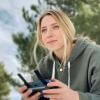
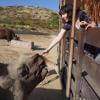











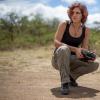

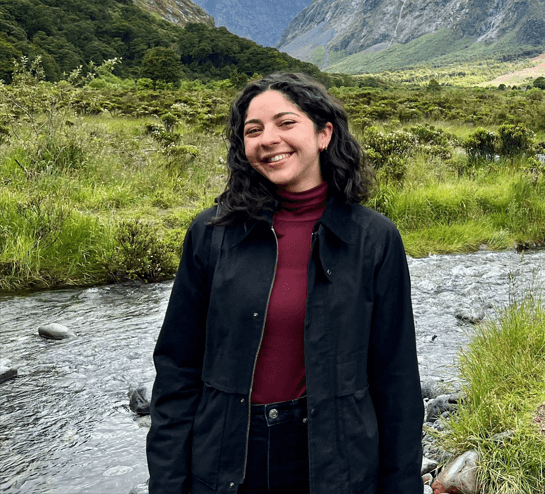
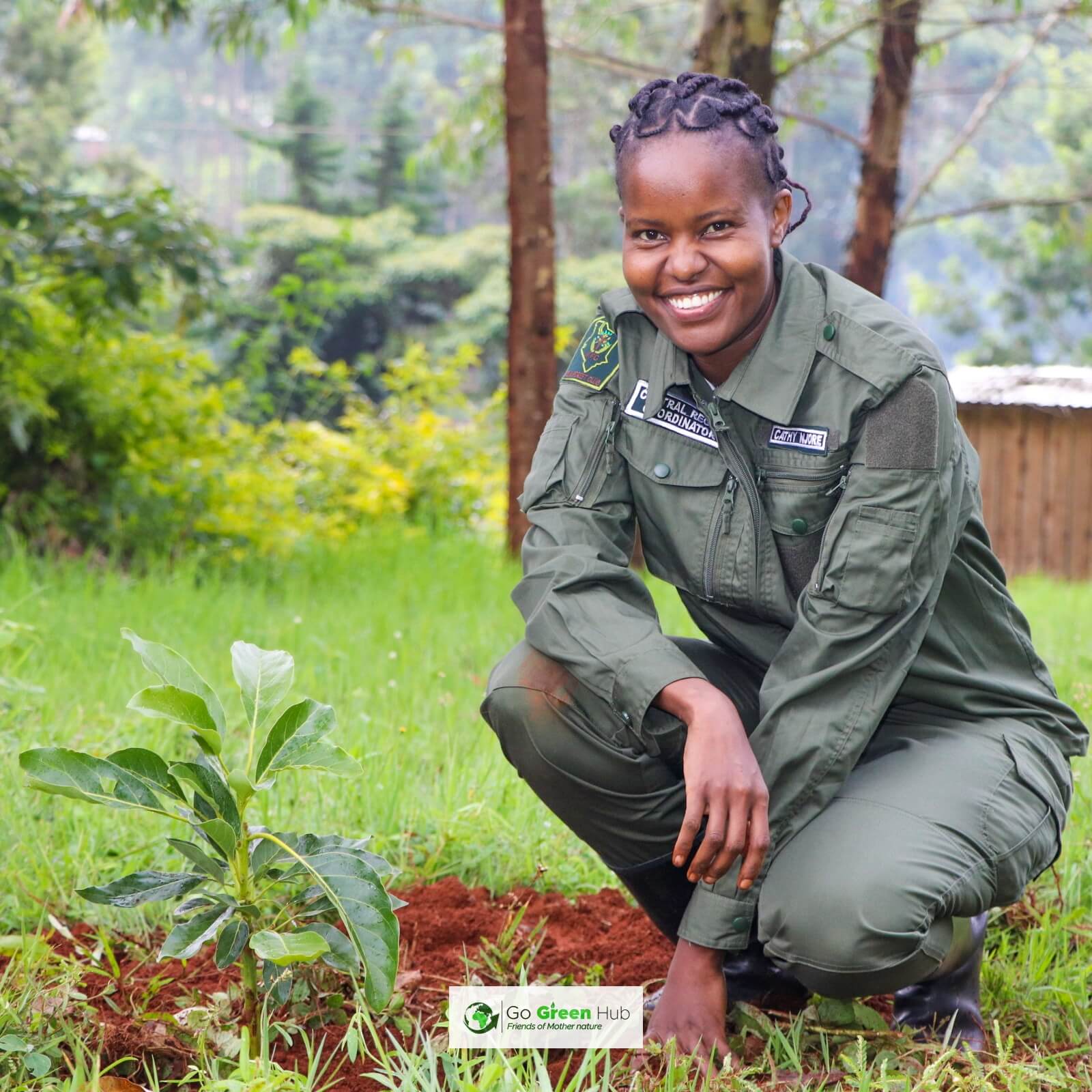

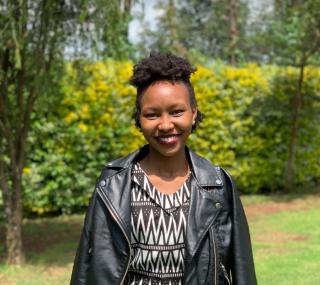










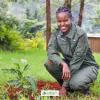
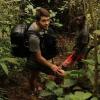
















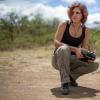

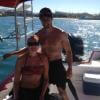

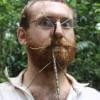







1 March 2021 12:04pm
Hi everyone!
Just dropping in to say we've seen more than 150 photos shared in this year's #tech4wildlife photo challenge already! We often hear it's really hard to get an idea of what the conservation tech landscape is like - who is doing what. This photo challenge is one of the ways we try to break down those information barriers and bring everyone together. If you're curious about what's being shared this year, you can check out our curated feed on twitter here:
https://twitter.com/WILDLABSNET/timelines/703260604908314625
We'd love to have your projects added into our big #tech4wildlife celebration. If you haven't already, take a photo and tell us a bit about what you're working on! Share it on Twitter with the hashtag #tech4wildlife and tag us @WILDLABSNET. As always, we'll count down our favourites on March 3, World Wildlife Day.
Steph